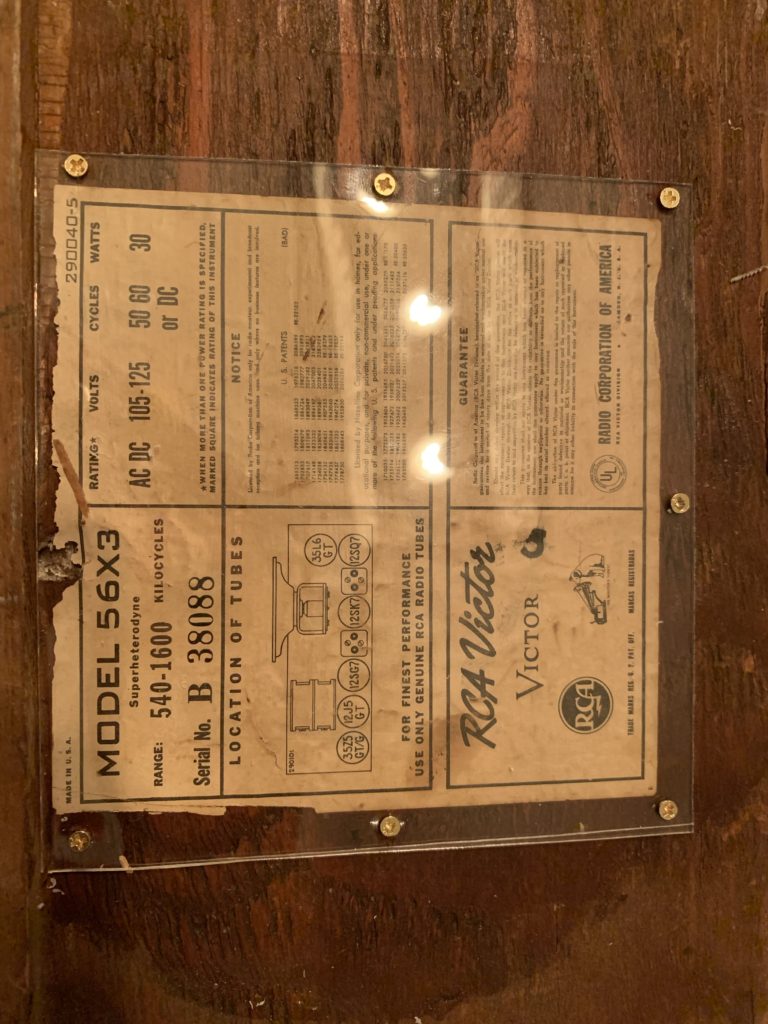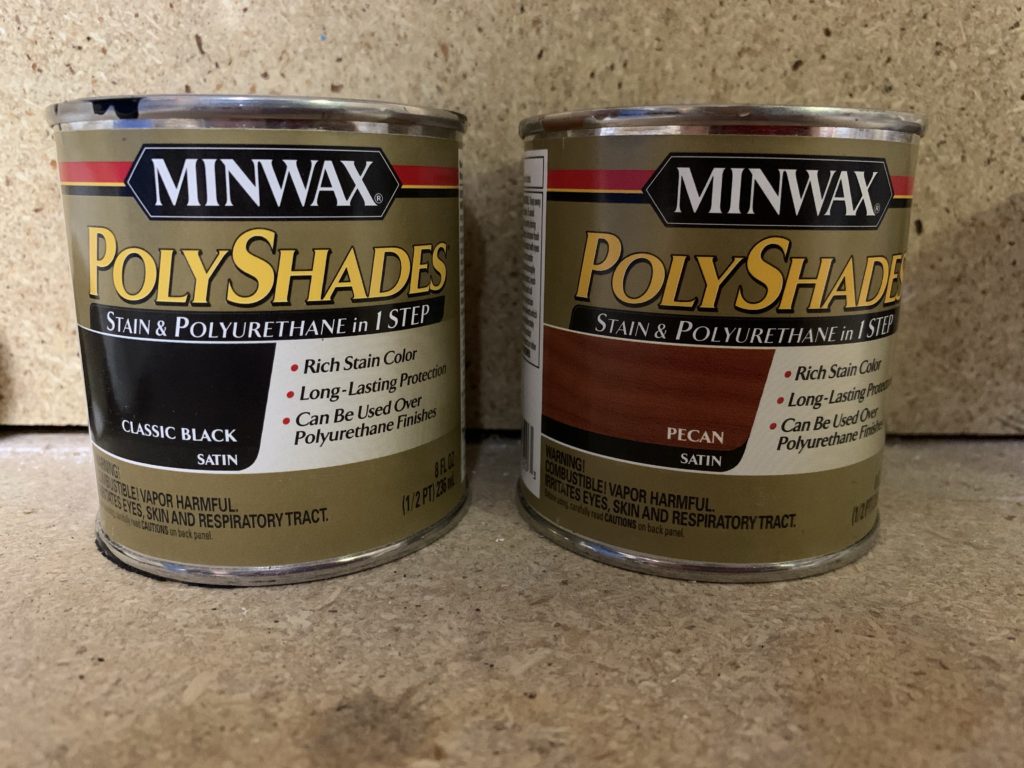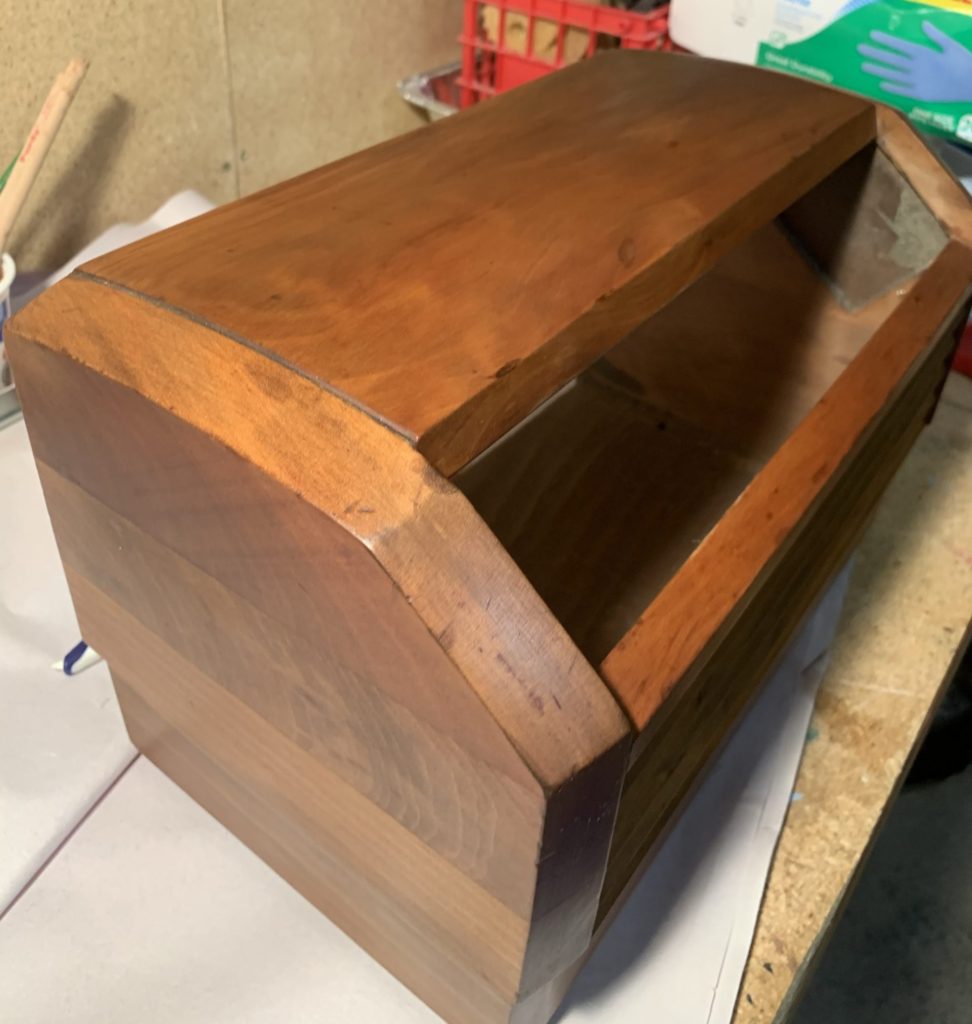so it’s been a little while since I posted anything, but it’s been slow going. Using the citrus gel stripper that was recommended by the others in the facebook group, I took what seemed many layers of not only varnish, but also 75 years of dirt and grime. It took several applications, and several days of waiting (apply the “flamingo snot”, then let it sit and eat at the old stain for 24 hours before removing) to get it to a point of starting to see the personality of the radio under the old finish. Between the citrus gel stripper, and then some elbow grease and sanding deglosser with #0000 steel wool, we took the radio down to its bare wood. The photo below is partway there – as one can see, however, some of the old stain was really tough to get out, which is where the super fine steel wool comes in. Not only did it lightly sand that last bit of varnish off, but it also helped buff out some of the scratches (the lightest ones – some of the others are 75 years worth of “battle damage” and were left alone).
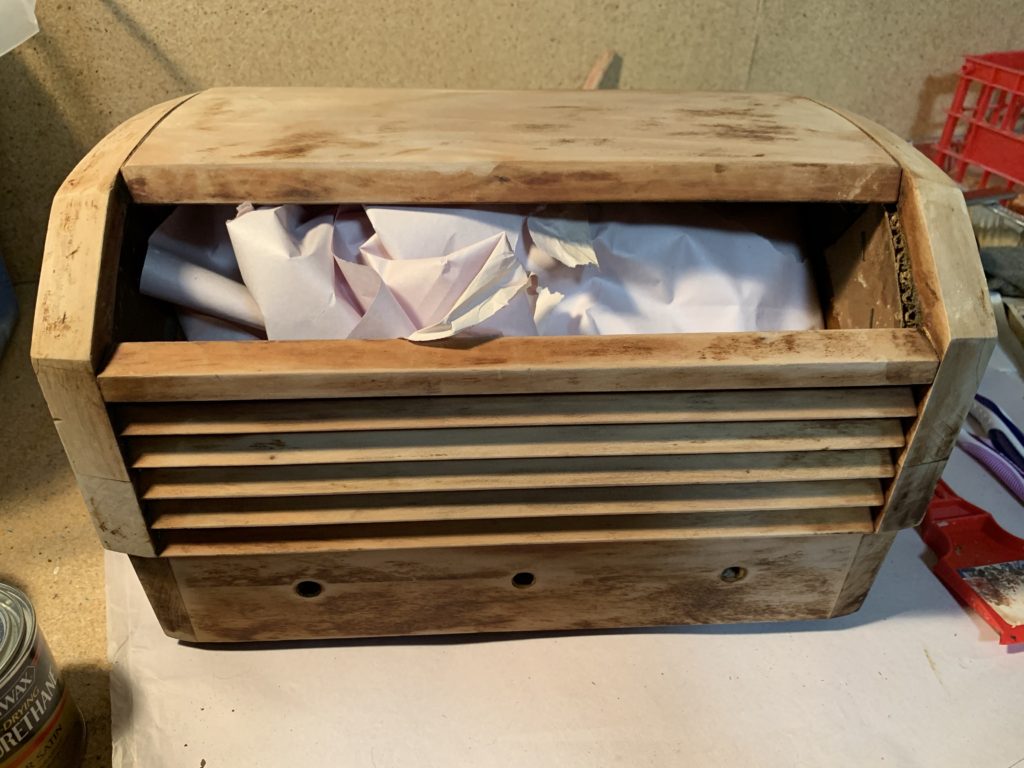
from there, it was time to start re-staining the radio. In order to approach the family heirloom i was working with, I chose “Pecan”, a Minwax stain. I did opt to stick with the original 2-tone design… and picked Minwax’s “Basic Black” stain for the bottom portion of the radio (below the speaker grill).
This makes the radio just a bit more “authentic”.
This photo shows the slight variations in the case due to the different pieces of wood used to actually form the case – these variations were hidden under the old stain job just due to the dark stain and the multiple layers that must have been applied. This newer stain really makes the wood grain begin to come out.
Unfortunately, I didn’t get more in-process photos. This next photo is the cabinet finished, with the bezel reinstalled. The method of installation is interesting – there are some square notches behind the bezel on the sides. Each of them has a piece of heavy corrugated cardboard stapled into it, pressing the glass into place. I had to replace the original cardboard, since it had broken down a little over time, and when I was working over the radio.
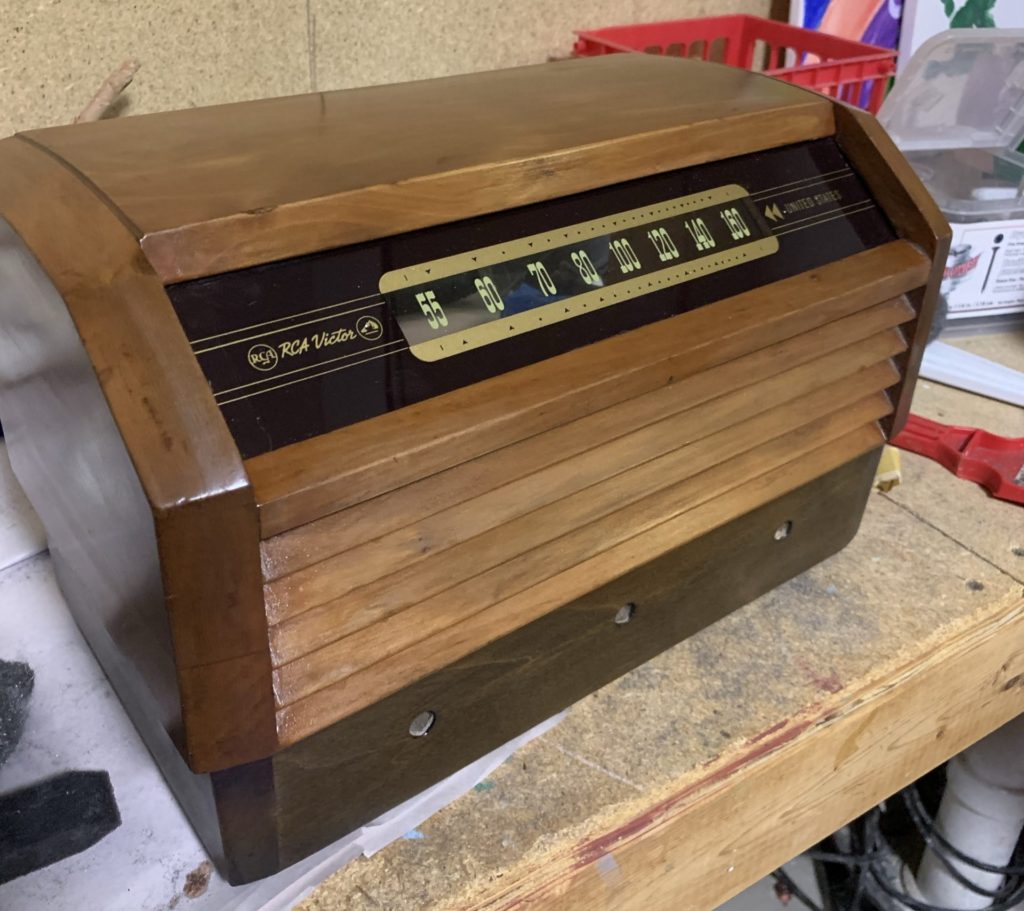
Once i finished with the case, I took a few minutes to align the radio – it’s only a 3 step process, really. Using an oscilloscope (Diglent analog Explorer) and function generator (same tool), I injected signals just as the procedure in Ryder’s manual said to. I did manage to gain a bit of sensitivity on the high end this way. The only thing I did different was modulate the 1300 kHz signal, so I could clearly hear a 1 kHz tone, and adjust the pots for maximum level of this tone, which would correspond to a maximum for whatever signal I was demodulating. I don’t know if this is what would have been done in 1946, but it’s a lot easier with the new tools I have at my disposal, since modulation is only a single mouse click.
It didn’t take long to re-assemble the chassis (I had to reinstall the antenna on the back of the chassis), and slip it into the case. Now it was time to check out the finished product. I tuned in KMJM-AM, the local AM oldies station, and was greeted by Junior Walker and the Allstars “Shotgun”
This prompted me to do a quick scan of the AM band (sorry for the poor narration…) – but pulling in WSM Nashville, WBBM Chicago, W0AI Dallas, and KMOX St. Louis was pretty exciting now that I had the radio out of the basement and assembled, The case definitely adds something to the sound when the entire radio is assembled.
All in all, I’m pretty happy with the end result, compared to where it started out… and as a final touch, I put a piece of “safety glass” (thin plexiglass) over the original label located on the bottom of the radio. It was actually interesting to see the specifications, and even the original serial number still intact – and this (along with a layer of Mod Podge) will make sure that label lasts a lot longer than the 75 years it’s been on the radio thus far.
